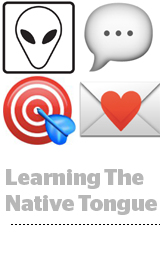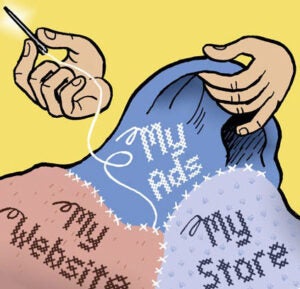 Messaging apps now attract just as many users as social media platforms.
Messaging apps now attract just as many users as social media platforms.
The combined users of Viber, WeChat, WhatsApp and Facebook Messenger now outrank Facebook, LinkedIn, Twitter and Instagram, according to recent BI Intelligence research. But marketers have struggled to tap into that audience.
Emojis might be a brand’s way in.
“Emojis have become for some users a natural way to express themselves,” said Thomas Husson, an analyst at Forrester who has researched messaging apps. “If brands manage to crack the emoji code, they can engage in more natural conversations.”
In the first half of 2015, emojis have gone from an obscure, goofy keyboard extension to a potentially vital marketing tool. Beyond the word “emoji” being formally inducted into the Oxford English Dictionary in May, brands like Coca-Cola have run campaigns based around emoji URLs and Domino’s now makes it possible to order pizza by tweeting an emoji.
The transition to emojis is accelerating on the back of messaging apps, according to Swyft Media co-founder Evan Wray, whose company provides branded emoji keyboards to advertisers. Swyft was acquired for $12 million in February by typesetting giant Monotype.
“If you look at traditional social media like Facebook, Twitter and Instagram, brand dollars and engagement didn’t aggressively enter the space until 2010 to 2012,” Wray said. “We’re now seeing the same thing in the messaging space.”
Messaging services aren’t an easy environment for marketers, as personal conversation threads are less hospitable to brand content than social feeds. And, without profile pages to jump between or a user search result function, there’s less inventory available.
As companies start catering to emoji branding, including emoji keyboard company Snaps and Line, a messaging app with its own emoji keyboard, marketers are seizing upon them as a chance to insert their brands into message services.
Though emoji campaigns have been mostly one-off affairs to date – often catering as much to PR as actual branding – being able to engage with messaging users is serious business.
Swyft offers both a full-service branded keyboard to marketers and a partner network that allows brands the ability to tap the scale of messaging apps. Swyft’s partners (including Kik, Viber, Line and 60 other chat services) enable the company to push out branded emojis to hundreds of millions of users.
AdExchanger Daily
Get our editors’ roundup delivered to your inbox every weekday.
Daily Roundup
On the back end, Swyft puts together data on the most popular emojis and the demographics downloading them.
The branded keyboard, a more recent product launch, takes the short-term benefits of blasting out branded emoji to millions of people and extends the use case. For instance, 1-800-Flowers commissioned its own emoji keyboard following a campaign over the Swyft partner network, which resulted in more than 225,000 downloads.
And while that keyboard was pushing Mother’s Day sales, it can be changed at any point moving forward.
“Once the users download the emoji keyboard, the emoji and stickers live on the mobile phones until the user deletes them,” said Amit Shah, SVP of online, mobile and social media at 1-800-Flowers. “[We now] have the ability to issue emoji updates and app refreshes to users with additional content.”
This durability is one of the bright spots for emoji marketers. Users can be continually restocked with new content as long as they keep the download.
Wray noted sports teams and leagues in particular are attracted to the product because it can be adjusted throughout a season.
Examples like Domino’s “tweet-to-order” emoji product and the 1-800-Flower campaign demonstrate the early steps emoji services are taking to be a driver of commerce, not just brand enthusiasm.
Shah noted that 1-800-Flowers is “an ROI and direct response-oriented marketer,” an important point considering the value of embedded emoji keyboards would intuitively come from less tangible brand lift.
Twitch, the livestreaming network designed for gamers that was bought by Amazon in 2014, uses emotes (its term for emoji) as a driver of revenue and user engagement.
One of Twitch’s revenue streams come from users subscribing to prominent users, similar to YouTube’s organic method of developing paid personalities. Each channel gets to make its own emotes for subscribers and share in the profits from users who subscribe to their emotes.
By allowing users to unlock new emotes, which can be used across the platform and not just on the channel they subscribe to, Twitch’s spokesperson, Chase, said they act as a kind of evangelizing force, prodding others into becoming paid subscribers as well.
“If they are clever or funny,” the spokesperson said, “they will frequently elicit responses such as ‘cool emote’ and ‘where’d you get it?’”
It’s that emotional response, interactions between friends (or strangers) in a chat feed, that makes emojis resonate so strongly.
Wray emphasized the same underlying principle for the success of Swyft’s emoji keyboard apps. “It feels like a kind of guerilla marketing, but so did social at first,” he said.
“This is the next step for that marketing, where companies are empowering users to organically drive the message to their friends, in ways brands could never do themselves.”













